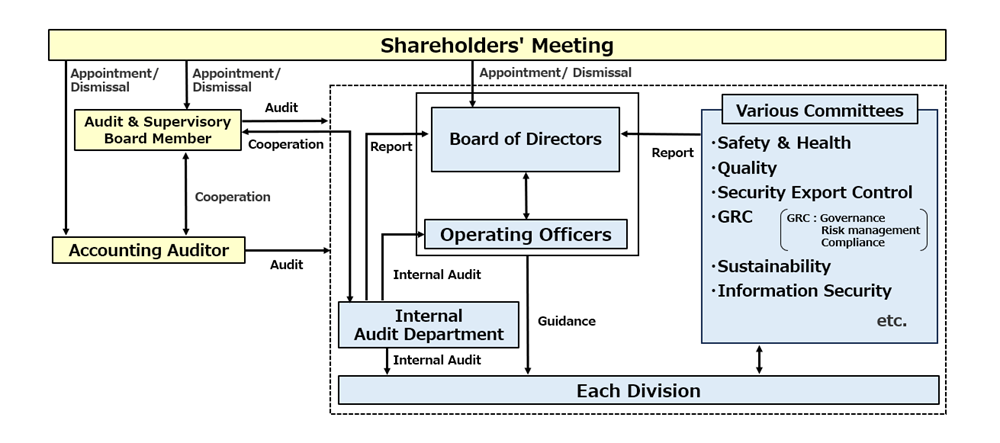Corporate Governance
Fundamental Approach
Daihatsu is actively conducting its business activities to realize its mission of “Staying close to our customers and enriching their lives.” We have also established a system that enables transparent, fair, timely, and appropriate decision-making regarding the promotion of our business.
Corporate Governance System
Internal Control
Based on “the Daihatsu Basic Policies on Establishing Internal Controls”, we have established a system to ensure the appropriateness of business operations as a business group and are operating this system appropriately. Within this system, we have established the GRC Committee, which is chaired by a director appointed by the president. The GRC Committee aims to establish an internal control system for the business group, ensure strict compliance with laws and regulations, risk management, and the reliability of financial reporting, and improve corporate value.
